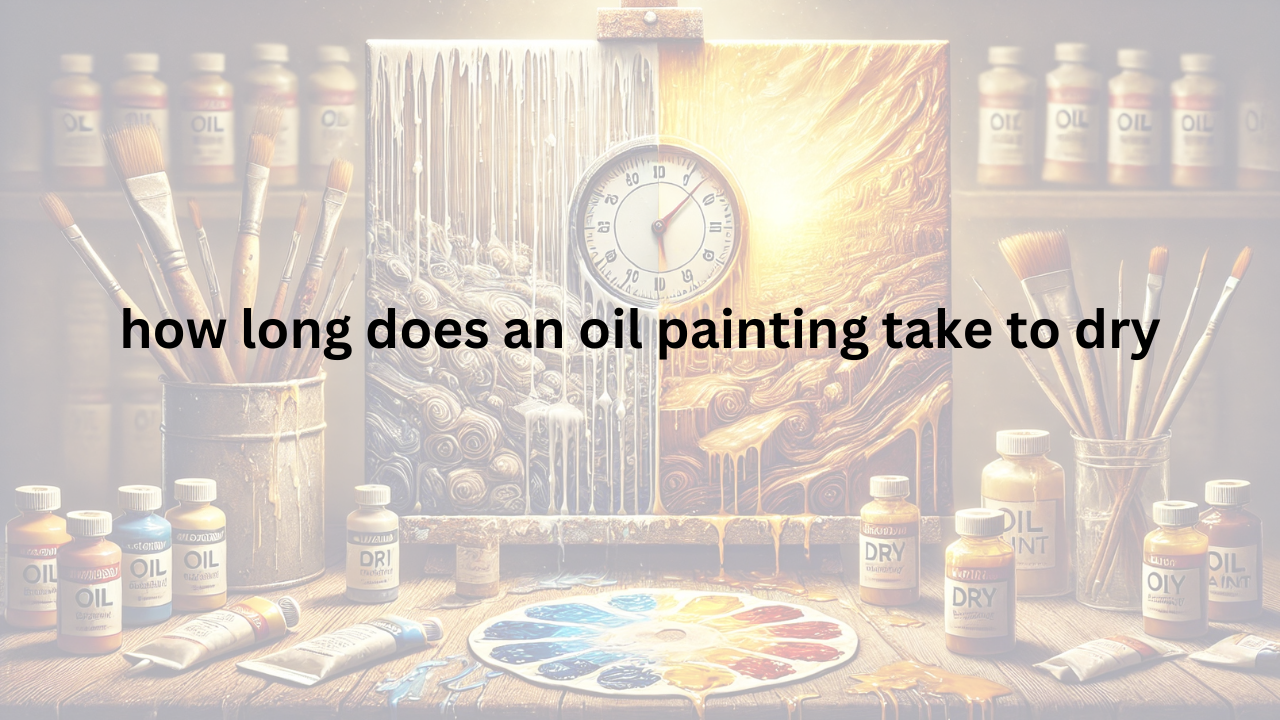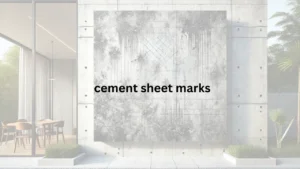Introduction
Oil painting is a popular art form that uses pigments mixed with oils like linseed or walnut oil. Artists have used this method for centuries to create beautiful artworks.
Understanding how long an oil painting takes to dry is important. Drying times can vary based on factors like paint thickness, type of oil, and room conditions. Knowing this helps artists plan their work and avoid problems like cracking or smudging.
Here’s a simple table showing how different factors affect drying times:
| Factor | Effect on Drying Time |
|---|---|
| Type of Oil Used | Linseed oil dries faster than poppy or walnut oil. |
| Thickness of Paint Layer | Thicker layers take longer to dry. |
| Environmental Conditions | Warm, dry, and well-ventilated areas speed up drying. |
| Pigment Characteristics | Some pigments dry faster than others. |
Understanding the Drying Process of Oil Paintings
Oil paint dries through a chemical reaction called oxidation. When exposed to air, the oil in the paint reacts with oxygen. This reaction forms new bonds, turning the liquid paint into a solid film. This process is known as polymerization.
It’s important to know that “dry to the touch” and “fully cured” are not the same. A painting that is dry to the touch may feel dry on the surface. This can happen in a few days. However, the paint layers underneath are still hardening. Full curing means the paint has completely hardened throughout. This can take several months.
Understanding how long an oil painting takes to dry is important for artists. It helps in planning the painting process and knowing when the artwork is ready for varnishing or display.
Here’s a simple table to illustrate the difference:
| Stage | Description | Time Frame |
|---|---|---|
| Dry to the Touch | Surface feels dry; underlying layers may still be wet. | Several days |
| Fully Cured | Entire paint layer has hardened completely. | Several months |
Knowing these stages helps in understanding how long an oil painting takes to dry and ensures the artwork’s longevity.
Factors Influencing How Long an Oil Painting Takes to Dry
Understanding how long an oil painting takes to dry is important for artists. Several factors affect drying times:
1. Type of Oil Used in Paints
- Linseed Oil: Dries faster.
- Poppy Oil: Dries slower.
- Walnut Oil: Dries slower.
2. Thickness of Paint Application
- Thin Layers (Glazes): Dry faster.
- Thick Layers (Impasto): Dry slower.
3. Environmental Conditions
- Temperature: Warm rooms speed up drying.
- Humidity: Dry air helps paint dry faster.
- Airflow: Good ventilation aids drying.
4. Pigment Characteristics
- Earth Tones (e.g., Umbers): Dry quickly.
- Certain Blues and Whites: Dry slower.
Here’s a simple table summarizing these factors:
| Factor | Effect on Drying Time |
|---|---|
| Type of Oil Used | Linseed oil dries faster than poppy or walnut oil. |
| Thickness of Paint Layer | Thinner layers dry faster; thicker layers take longer. |
| Environmental Conditions | Warm, dry, and well-ventilated areas speed up drying. |
| Pigment Characteristics | Earth tones dry faster; some blues and whites dry slower. |
Typical Drying Times for Oil Paintings
Understanding how long an oil painting takes to dry is important for artists. Drying times can vary based on several factors.
General Timelines
- Surface Drying: The top layer feels dry to the touch. This usually happens within a few days.
- Complete Curing: The entire painting has fully hardened. This can take several months to a year.
These timelines can change depending on various factors.
Variations Based on Influencing Factors
- Type of Oil Used:
- Linseed Oil: Dries faster.
- Poppy or Walnut Oil: Dries slower.
- Thickness of Paint Application:
- Thin Layers (Glazes): Dry faster.
- Thick Layers (Impasto): Dry slower.
- Environmental Conditions:
- Warm, Dry, Well-Ventilated Areas: Speed up drying.
- Cool, Humid, Poorly Ventilated Areas: Slow down drying.
- Pigment Characteristics:
- Earth Tones (e.g., Umbers): Dry faster.
- Certain Blues and Whites: Dry slower.
Here’s a simple table summarizing these factors:
| Factor | Effect on Drying Time |
|---|---|
| Type of Oil Used | Linseed oil dries faster than poppy or walnut oil. |
| Thickness of Paint Layer | Thinner layers dry faster; thicker layers take longer. |
| Environmental Conditions | Warm, dry, and well-ventilated areas speed up drying. |
| Pigment Characteristics | Earth tones dry faster; some blues and whites dry slower. |
Techniques to Accelerate Drying Times of Oil Paintings
Understanding how long an oil painting takes to dry is important for artists. Several techniques can help speed up this process.
1. Use of Drying Mediums
- Alkyd Mediums: These are special liquids mixed with oil paints to make them dry faster. For example, Liquin by Winsor & Newton is popular. Adding a small amount to your paint can reduce drying time to less than a day.
2. Environmental Adjustments
- Temperature: Warm rooms help oil paint dry faster. However, avoid extreme heat, as it can cause cracking.
- Airflow: Good ventilation speeds up drying. Using a fan can help.
- Humidity: Dry environments are better. High humidity slows drying. What a Portrait
3. Application Methods
- Thinner Layers: Applying thin layers of paint dries faster than thick ones. This technique, called glazing, can reduce how long an oil painting takes to dry.
- Avoid Excess Oil: Using too much oil in your paint mix can slow drying. Use only the necessary amount to keep the paint workable.
Here’s a simple table summarizing these techniques:
| Technique | Method | Effect on Drying Time |
|---|---|---|
| Use of Drying Mediums | Adding alkyd mediums like Liquin to oil paints. | Speeds up drying to less than a day. |
| Environmental Adjustments | Increasing temperature, improving airflow, and reducing humidity in the painting area. | Warm, dry, and well-ventilated areas speed up drying. |
| Application Methods | Applying thinner layers of paint and avoiding excess oil in the paint mixture. | Thinner layers dry faster; too much oil slows drying. |
Common Misconceptions About Oil Paint Drying Times
Understanding how long an oil painting takes to dry is essential for artists. However, several misconceptions can lead to confusion. Let’s address some common myths and clarify the facts.
1: Oil Paintings Never Fully Dry
Some believe that oil paintings remain wet forever. In reality, oil paintings do dry, but the process is gradual. Initially, the paint becomes dry to the touch as solvents evaporate. Over time, the paint undergoes curing, where it hardens completely through chemical reactions. This curing can take several months to a year, depending on factors like paint thickness and environmental conditions.
2: Drying and Curing Are the Same
It’s common to think that once an oil painting feels dry, it’s fully cured. However, drying and curing are distinct stages:
- Drying: The surface feels dry as solvents evaporate. This can occur within hours to days.
- Curing: The paint fully hardens through chemical reactions, which can take weeks to months.
Understanding this distinction is crucial, especially when considering varnishing or transporting artwork.
Clarifying the Difference Between Drying and Curing:
| Process | Description | Timeframe |
|---|---|---|
| Drying | Surface becomes dry to the touch as solvents evaporate. | Hours to days. |
| Curing | Complete hardening of paint through chemical reactions, ensuring durability and stability. | Weeks to months. |
Recognizing these stages helps artists make informed decisions about handling and preserving their oil paintings.
Importance of Patience in Oil Painting
Understanding how long an oil painting takes to dry is crucial for creating lasting artwork. Patience during the drying process ensures the painting’s durability and beauty.
Value of Allowing Adequate Drying Time
Allowing each layer of oil paint to dry properly is essential. This patience prevents issues like cracking and ensures the painting remains stable over time. Rushing this process can compromise the artwork’s quality.
Potential Issues from Insufficient Drying Periods
Not giving enough drying time between layers can lead to several problems:
- Cracking: Applying new paint over wet layers can cause the surface to crack as layers dry at different rates.
- Discoloration: Insufficient drying can result in colors becoming dull or muddy, affecting the painting’s appearance.
- Adhesion Problems: Layers may not bond properly, leading to peeling or flaking over time.
Here’s a simple table summarizing these points:
| Issue | Cause | Effect on Artwork |
|---|---|---|
| Cracking | Applying new paint over wet layers. | Surface cracks, compromising the painting’s integrity. |
| Discoloration | Insufficient drying leading to color mixing. | Dull or muddy colors, affecting visual appeal. |
| Adhesion Problems | Layers not bonding properly due to inadequate drying. | Peeling or flaking paint, reducing artwork longevity. |
Conclusion
Understanding how long an oil painting takes to dry is essential for artists. Key factors influencing drying times include the type of oil used, paint thickness, environmental conditions, and pigment characteristics. Patience during the drying process ensures the longevity and quality of the artwork.
By considering drying times in your creative process, you can prevent issues like cracking, discoloration, and adhesion problems. Allowing each layer to dry adequately before applying the next contributes to the durability and beauty of your oil paintings.
Here’s a summary of the factors affecting drying times:
| Factor | Impact on Drying Time |
|---|---|
| Type of Oil Used | Different oils (e.g., linseed, walnut) have varying drying rates. |
| Thickness of Application | Thicker paint layers take longer to dry. |
| Environmental Conditions | Temperature, humidity, and airflow can speed up or slow down drying. |
| Pigment Characteristics | Some pigments dry faster or slower due to their chemical properties. |
Incorporating this knowledge into your workflow will enhance the success and longevity of your oil paintings.



